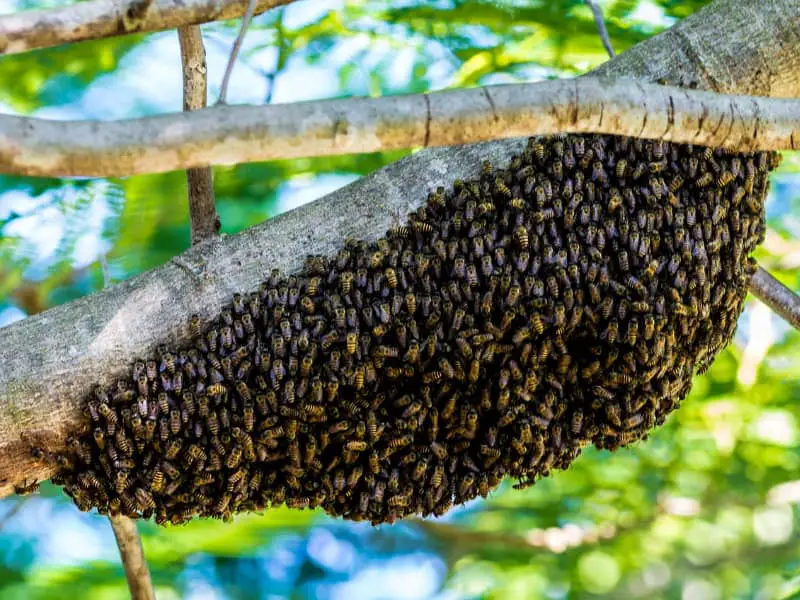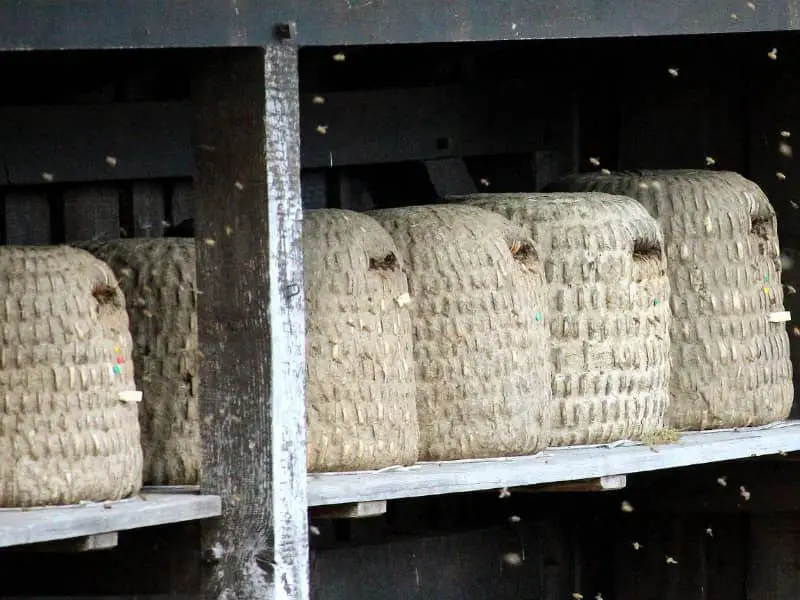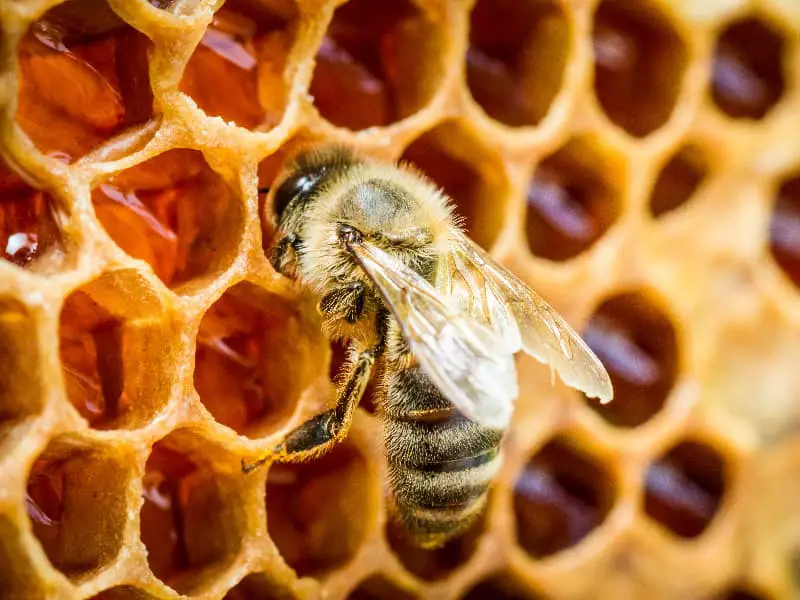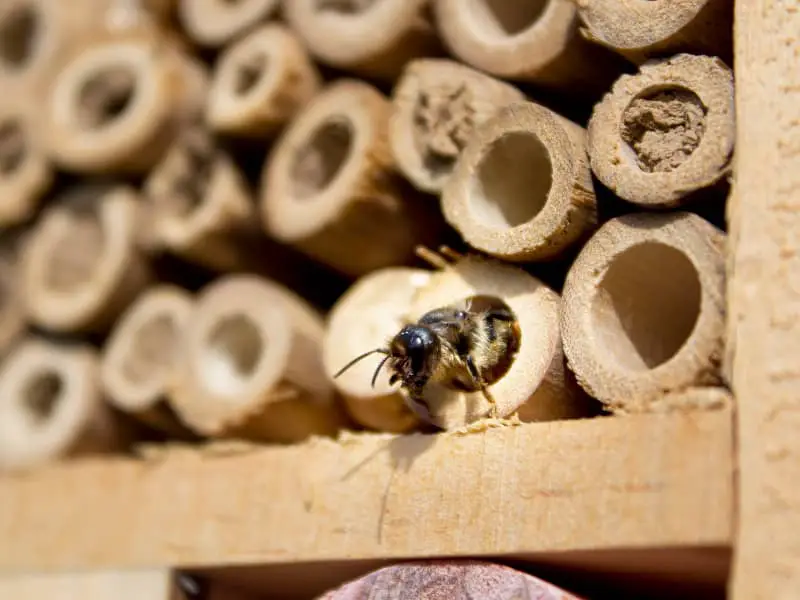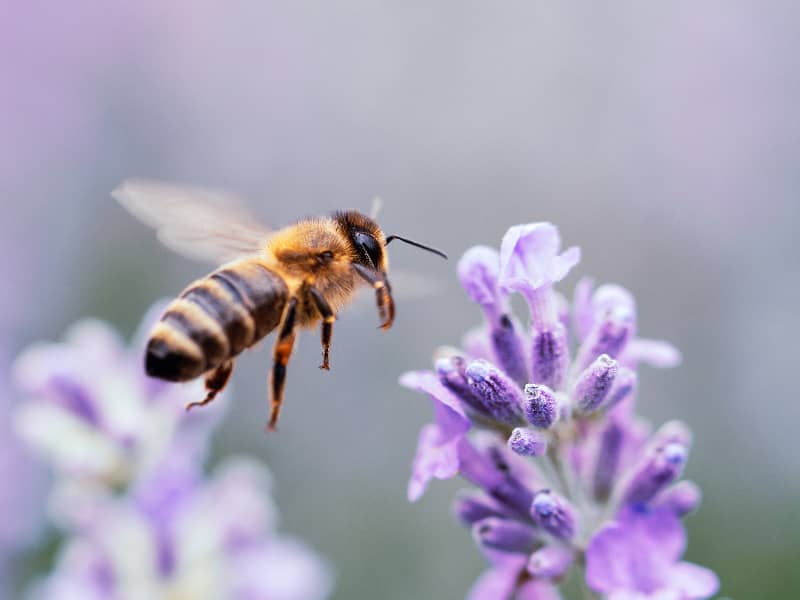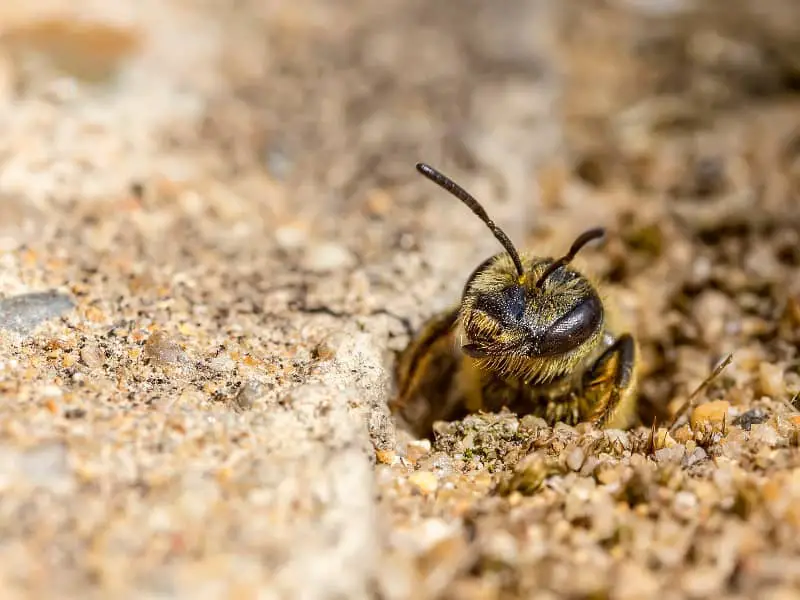
Sand bee
Do you know that gentle buzz that heralds summer? No, I don't mean buzzing honeybees, but their lesser-known relatives: The sand bee. These remarkable creatures are more than simple insects; they are masters of camouflage, architects among bees, and invaluable to our ecosystem. Dive with me into the world of sand bees and learn what makes them so special.
What are sand bees?
Sand bees belong to the family of bees and are closely related to other known species such as the honey bee. But despite this relationship, their habits and characteristics are significantly different. In total, there are more than 500 different species of sand bees in Europe, each with their own preferences and specialties.
The habitat of the sand bee
Many wonder: why are they called sand bees? The name comes from their preferred habitat. Sand bees love sandy, open areas where they can dig their nests. They prefer sunny locations with little vegetation so they can easily dig and lay their eggs.
Building such a nest is no easy task. Sand bees use their strong legs and mandibles to dig holes in the ground, often several centimeters deep. Inside these holes, they lay their eggs and thus ensure the continuation of their species.
Sand bee diet
But what do sand bees eat? Like most bee species, sand bees feed on nectar and pollen. With their long tongues, they lick the sweet nectar from the flowers and collect pollen at the same time. The pollen grains are transported in special pockets on their hind legs. This serves not only their own nutrition, but also the rearing of their offspring.
The larvae of sand bees that hatch in the sand nest need a large amount of pollen and nectar to grow. Therefore, the adult sand bees often build up stores in their nests.
Dangers and threats for sand bees
Not everything in the life of a sand bee is easy. Like many insects, they face numerous challenges and threats. One of the main enemies of sand bees are predators such as birds and spiders. But that is not the only danger.
Another problem is caused by building development. Due to the loss of their habitat, many sand bees can no longer find enough suitable places to nest. This has led to some species already being endangered.
But there is also good news: You can help protect sand bees. For example, by leaving sandy corners in your garden or providing a habitat for them with special sand piles.
Can sand bees sting?
One of the most common questions people ask is whether sand bees can sting. The answer to that is yes, but with a big "but". Sand bees are very peaceful creatures. They are not aggressive and only sting when they feel extremely threatened. And although they do sting, the sting is usually less painful than that of a honeybee.
Reproduction and brood care
When does the breeding season of sand bees actually begin? Spring is the main time for many sand bee species to become active. As soon as the temperatures rise and the first flowers appear, the adult bees burst out of their underground chambers to start reproducing.
After mating, the females lay their eggs in the carefully prepared sand chambers. There they surround each egg with a small supply of nectar and pollen so that the larvae have sufficient food after hatching. The larvae then develop over the summer, overwinter in the soil, and emerge as adult bees the next spring.
Adaptability of the sand bee
Although sand bees appear quite inconspicuous at first glance, they have some amazing adaptations that help them live in their particular habitat. Their bodies are often covered with fine, brush-like hairs that help them repel sand particles while moving around in the soil.
Their wings are strong and allow them to fly even in windy weather. This is especially useful since sandy places are often exposed to windy conditions. Moreover, they have strong eyes that protect them from sunlight and at the same time allow them to see flowers even from a distance.
Communication and social behavior
Interestingly, unlike their famous relatives, honey bees, sand bees are largely solitary. This means they live and work alone and do not form large colonies like honeybees. This leads to the question: How do sand bees communicate with each other?
Although they do not live socially in colonies, sand bees have nevertheless found ways to communicate with each other. This is mainly done via chemical signals and pheromones. These are used to attract potential mates or mark territorial boundaries. Their keen sense of smell helps them perceive these signals and react accordingly.
Mimicry in the sand bee
A fascinating phenomenon in nature is mimicry - the ability of some animals to imitate the appearance of other animals to protect themselves from predators. Some sand bee species have evolved to look like more dangerous wasps. Although they are not dangerous themselves, they benefit from this "camouflage costume" because potential predators avoid them.
Parasitic sand bee species
While most sand bee species peacefully dig their own nest site and care for their offspring, there are some that are parasitic. These "cuckoo bees" lay their eggs in the nests of other sand bee species. The larva of the parasitic bee then feeds on the pollen and nectar collected by the host female, and often on the host larva itself.
Interaction with plants
Some plants have developed a special relationship with sand bees and rely on them as pollinators. These plants produce nectar and pollen that are especially attractive to sand bees. The special shape of their flowers makes it easier for sand bees to reach the nectar, while other insects often have difficulty.
Thermal regulation and activity patterns
Sand bees are cold tolerant and can become active at low temperatures when other bee species are still inactive. Their body color and shape helps them warm up quickly in the sun. Their flight patterns are often short, quick flights between flowers and nesting sites, which helps them regulate their body temperature.
Sand bees in research
Researchers are particularly interested in sand bees because they can learn so much about adaptation and evolution. The fact that there are so many different species, living in different habitats and under different conditions, makes them an ideal object of study. Their habits, reproductive strategies and interactions with other organisms offer a wide field for scientific investigation.
Man and sand bee
The presence of sand bees in an area can actually be a good sign of environmental quality. Because they depend on specific habitats and food sources, sand bees often indicate that an ecosystem is healthy and functioning reliably.
As a garden owner or nature lover, you can help protect these beneficial creatures. A wild garden with native plants that includes sandy areas can be a paradise for sand bees. It is also important to avoid the use of pesticides, as they can be harmful to sand bees and other beneficial insects.
It is worth paying attention to these small, industrious helpers. Not only are they fascinating creatures, but they also play a crucial role in our ecosystems. By learning and helping them, you not only ensure the protection of sand bees, but also promote the diversity and health of our environment.
Author

-
Garden animal - A life with nature
Welcome to my animal blog! My name is Dirk and I am happy to take you on my journey through the fascinating world of animals and gardening.
Born 54 years ago, I have had an insatiable curiosity for the animal world around me since childhood. Although I have moved professionally in other industries, my true passion has always been animals and nature. It is remarkable how a small garden has become such an important part of my life.
Many of my fondest memories are associated with the animals that share our home. Whether it's the curious squirrels that scurry across the trees in the morning, the colorful variety of birds that visit our feeders, or the busy bees and butterflies that pollinate our flowers, every moment with them is invaluable to me.
This blog is my contribution to share my experiences, discoveries and insights with like-minded people. Here I will share stories of unforgettable encounters with animals, give tips on gardening and creating wildlife-friendly habitats, and take you on my journeys through nature.
Thank you so much for being here!
Cordial,
Dirk aka garden animal
Last posts
- 27. February 2024PetsVeganes Hundefutter – Grün und Gesund?
- 18. January 2024ChickensOregano für Hühner
- November 27, 2023HamsterDiurnal hamsters
- November 24, 2023HamsterHamster hammock

